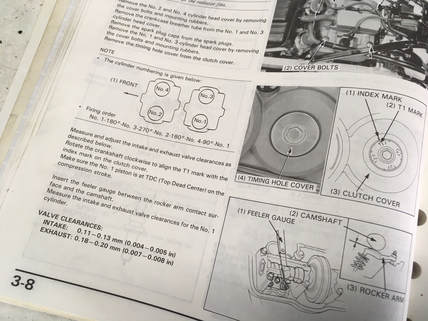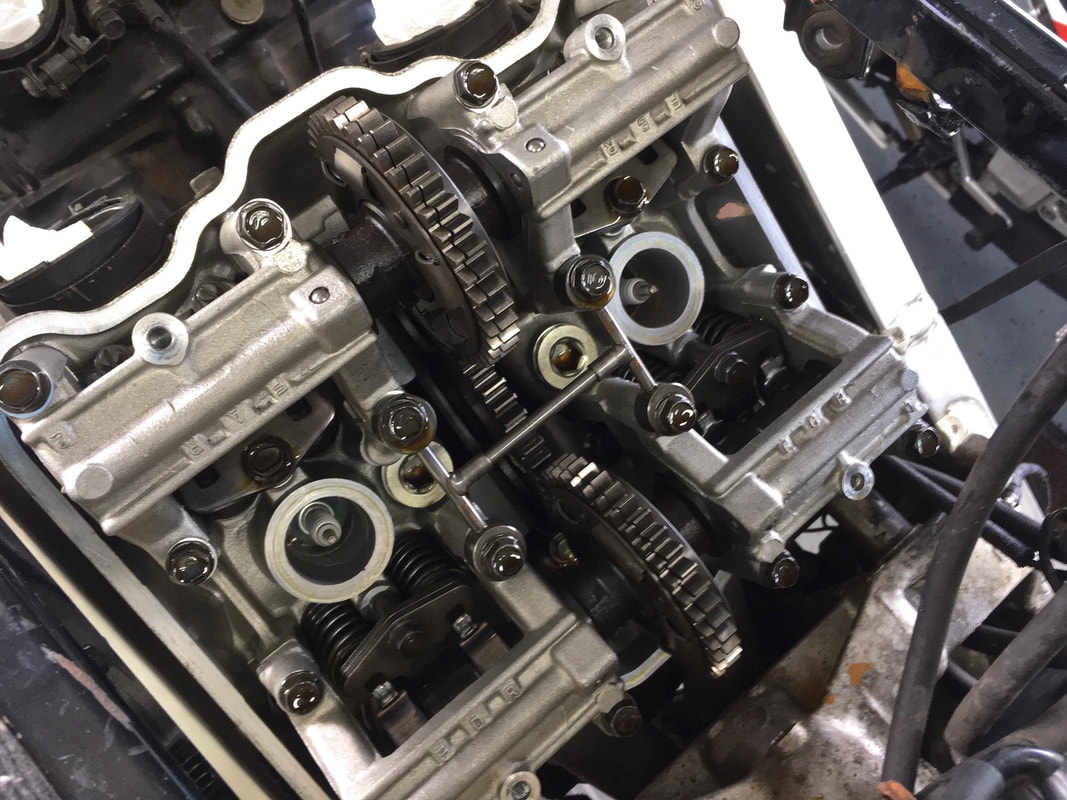
This is straightforward wrench-turning and is covered well in the FSM (Factory Service Manual), but for those unfamiliar, here's how I go about it.
I begin by blowing out the spark plug holes and the general area with compressed air. I'll be removing the plugs for this operation and we don't want any debris to enter the engine as we remove the valve cover. Remove the eight cover bolts and the covers. They may require some gentle tapping with a soft hammer. The front lifts off toward the front wheel but the rear is a tighter fit. Unhook the wiring harness along the right frame rail and lift it up and clear, which will allow the cover to be removed by lifting the left side first, then up and out.
(click on any small image to enlarge)
----------------------------
The idea here is to relieve the valve of any pressure from the cam lobe, which translates into positioning the lobe away from the valve and spring. So, I simply rotate the engine, turning the timing bolt clockwise till I visually see the two lobes on whichever valve set I'm adjusting rotate upward, away from the valve and spring. In both photos below we see the lobes (in this case #1 intake) rotated upward. When checking the clearance, approach from the opposite side of the adjusting locknut and screw — I'm not doing that here just for illustration purposes. In other words, come in from the backside with the feelers (there's an illustration in the FSM).
The tolerances for the VFR are pretty tight, i.e. .004-.005" on the intakes. Simply be sure that at a .004" feeler will fit, but a .006" will not. The clearances in these engines will tighten with normal wear, so being on the loose side is okay (.005"). If adjustment is necessary, I note where the screwdriver groove is situated, loosen the locknut with a 10mm socket, move the screw slightly in the direction needed, snug the locknut and recheck the clearance. With practice, this goes pretty quickly. The rear exhausts are harder to get to, but keep at it till it's right. When your adjustment is good, tighten the locknut (tight!), rotate the engine through a few cycles, and recheck. Move onto the next cylinder. Tip: #1 and #4 intakes can be done on the same rotation, as can the exhausts. When you're finished, reinstall the covers — wiping the gaskets and mating surfaces and carefully torquing the cover bolts. Don't forget the timing plug.
Job done!
At this point I would normally clean up the valve covers and the cylinder valley before refitting the valve covers, but I don't yet know about the health of this engine, so I'm simply installing the valve covers and will move on to the compression check.












 RSS Feed
RSS Feed